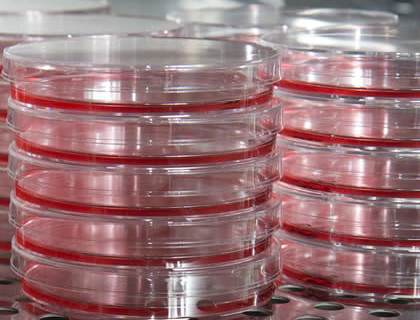
Human Stem Cells Created Using Cloning, but did it happen too Late?
In last week’s issue of the Journal Cell, the study, “Human Embryonic Stem Cells Derived by Somatic Cell Nuclear Transfer,” describes a breakthrough that scientists have been seeking for years – for the first time researchers were able to use cloning to create embryonic stem cells. The study describes the process that researchers at Oregon Health and Science University in Beaverton used to create patient specific embryonic stem cells using cloning. Researchers took skin cells from an infant then fused them with donated, unfertilized human eggs and created human embryos that were genetically identical to the infant. They then were then able to extract stem cells from the embryos and create a stable cell line.
The value of the discovery is that these genetically identical stem cells could become any cell in the body and therefore used to treat a host of diseases. This process called therapeutic cloning has long been sought after, but after several years of failure and even a fraudulent claim of success, many moved away from researching therapeutic cloning. Then in 2006, induced pluripotent stem cells (iPSCs) were discovered and this became the focus for the future of Cell Therapy.
Last week there was much coverage of the study and what it means for the future of Cell Therapy. Some scientists applauded the effort, but questioned the actual value of the discovery for therapeutic purposes. Still others seemed to feel as if Cell Therapy had moved on and the challenges around therapeutic cloning deterred from its value.
Challenges:
-
Ethical Issues
One could expect strong movement against this kind of therapeutic application due to the destruction of embryos. Also there is going to be fear about the possibility of creating cloned babies or “designer babies” using this technique. The New York Times Article, “Cloning is Used to Create Embryonic Stem Cells,” spent significant time talking about the potential for this risk. While the Oregon researchers state that reproduction using their technique isn’t possible, it won’t stop detractors from discussing the possibility as a major concern.
-
Eggs Needed
The process described in the study only utilized 15 donor eggs to produce one cell line and 5 donor eggs to create another, however if applied in a therapeutic application it could take many eggs to treat all patients that suffer from a disease. It is also expensive, according to the Nature article, “Human Stem Cell Created by Cloning,” each egg donation costs between $3,000-$7,000.
-
Lack of NIH Funding
Since the technique involves destroying embryos, research utilizing these methods would not qualify for NIH funding.
-
iPSCs are already under review in Japan
Since the discovery of induced pluripotent stem cells (iPSCs) in 2006, there has been a tremendous amount of hope around using these cells for therapeutic use. The discovery won a Nobel Prize. In February, the first clinical study involving iPSCs moved forward in Japan. While there are still concerns about using these cells, if clinical studies prove safety and efficacy they could be a very powerful tool. IPSCs are adult cells reprogrammed to an embryonic state, which allows genetically matched, patient specific cell lines. However, the advantage is that iPSCs require no egg and no embryos for production.
Some scientists assert the value of continuing to explore therapeutic cloning as a viable stem Cell Therapy option and encourage head to head studies between therapeutic cloning derived cells and iPSCs. Particularly since some believe that there are also challenges associated with iPSCs and questions around whether they are completely reprogrammed.
So I want to hear what you think. After a week of reading the coverage, do you think that this is a breakthrough for Cell Therapy or do you think that other Cell Therapy options are more viable? Is there a place for therapeutic cloning in Cell Therapy?